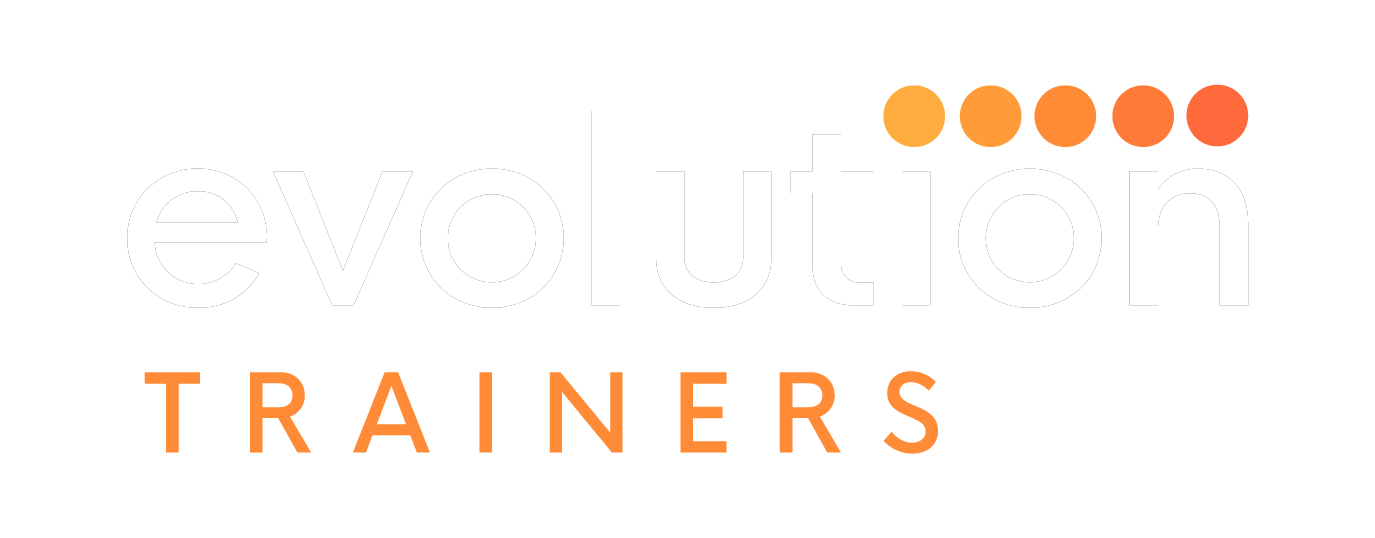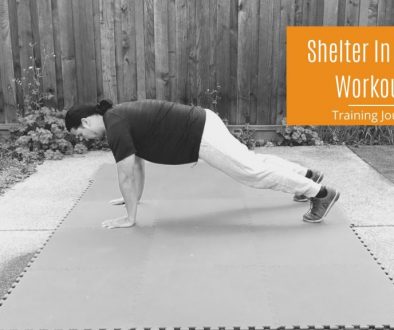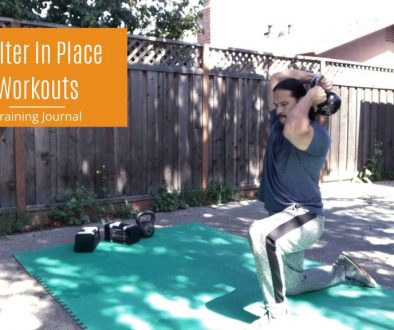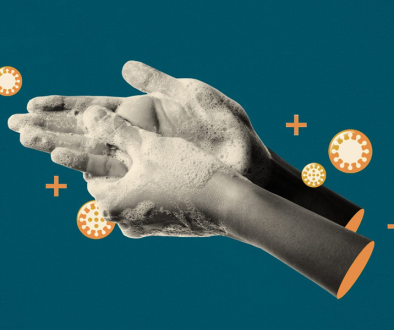How to Avoid Being Sore From Working Out By Coach Marc Santos
Muscle soreness. Some love it, some hate it.
If you love it, it may be for reasons unfounded, such as you may hold the belief…
… if you’re sore then it must have been a good workout.
When, actually, you don’t need to be sore at all for a workout to be good, or produce a beneficial effect. This is also demonstrated by the fact you experience less soreness as you become more accustomed to training(1).
Or you love it because you are a bit of a masochist. And if that’s your thing, kudos to you my friend.
If you hate it, it’s probably because it can be painful, and get in the way of many daily activities.
If you’ve ever been so sore that you can’t reach above your head, or sit down on the lou, or get into your car, then you know what I am talking about.
And if this is you, or maybe you don’t exactly “hate it”, but you wouldn’t mind doing without it – this tip is for you.
But first, what is it?
Muscle Soreness = DOMS (Delayed Onset Muscle Soreness)
DOMS is the feeling you get after an intense workout, or after doing something physical that you may not be accustomed to.
The soreness or pain experienced usually peaks around 48 hours with some variance of intensity between 24 and 72 hours and usually subsides within 7 days (2). But, of course, this is dependent on severity, with some research showing it can last longer than 8 days (3).
The mechanisms for what causes DOMS are not completely understood with some lines of research pointing to the amount of mechanical tension a muscle experiences where forces may exceed the elastic properties of a muscle; therefore, causing muscle damage (which is highly correlated with muscle soreness). Evidence of this is supported by the fact that eccentric exercises always produce a high level of muscle damage (4).
Other studies find it may be more related to inflammatory markers released into the bloodstream due to a disruption in the chemical processes within a muscle which would also cause damage to a muscle fiber – but from the inside out.
There is probably some truth to both, and may likely depend on the type of training performed (5).
It should also be noted, technically speaking, muscle soreness and muscle damage are not the same, although they are very related to each other.
Muscle soreness is better defined as the pain EXPERIENCED. This may be due, in part, to pain receptors sensing inflammatory markers in the bloodstream and communicating this to the brain.
Muscle damage is the physical microtrauma inflicted on the muscle fiber itself which is often, but not always, associated with muscle soreness(6).
This difference is also exemplified by the very name “delayed onset muscle soreness”, suggesting that the pain experienced is delayed – although the muscle damage has already occurred after the training session – you do not feel the soreness until later.
What muscle soreness is most certainly NOT, is a result of lactic acid build-up which is still a commonly held belief, but lactic acid build-up returns to normal levels quickly during periods of rest.
Although, strictly speaking, muscle soreness and muscle damage are different, for the sake of this article we will be referring to them as one and the same.
But Isn’t Being Sore Good?
This is a fair question and one I struggle with too.
It may be because soreness suggests you “did” something. You worked out, you worked your muscles, and now you will be better for it.
And in most cases, you’re probably right.
But if we can acquire many of the benefits from strength training while mitigating the amount of soreness we experience, wouldn’t that be just as good? Or better even?
Not to mention the fact that training too hard – early on – can actually make you worse; which is reflected by acute cases of rhabdomyolysis.
Or that muscle damage can actually lead to LESS muscle growth due to CNS fatigue and impaired muscle activation (2,7).
So the question is…
…is it possible to gain all the benefits from strength training without having to be sore?
Damaging Muscle to Build Muscle?
It’s one of the most common explanations a trainer will give to a new client experiencing DOMS for the first time.
“You have to break down the muscle so that when it rebuilds it will be bigger and stronger.”
Or some iteration of this idea.
And while this is well-intentioned, it does not appear to be true.
Muscle Damage Does NOT Lead to Hypertrophy
When someone says your muscle will “rebuild bigger” they are referring to hypertrophy or a muscle growing in size.
This statement infers damage is necessary to build muscle, but recent research has shown the process to repair and regenerate muscle is not the same as the process to generate new muscle(8).
And while mechanistically, they follow a very similar chemical pathway in the body, how the resources(proteins) are allocated is very different.
Anecdotally, this should make sense that the processes are different.
Have you ever attempted to train for a marathon, having never really run before?
If you have, then you probably have experienced the soreness that comes along with it. But what you don’t experience is an incredible amount of muscle growth (9).
I mean, how many jacked marathon runners do you know??
Exactly.
Muscle Damage Does NOT Make You Stronger
The idea that muscle damage would make you stronger is based on the premise that muscle damage would lead to more muscle.
Seeing as how muscle damage is not causative of building more muscle, then this claim seems to have no legs to stand on.
Not to mention, strength is a very complex quality, which is developed through a number of physical adaptations – not just muscle size alone(10).
So the statement…
“You have to break down the muscle (damage it) so that it can rebuild bigger and stronger.”
…is really a gesture of sympathy for the pain you are experiencing, rather than one founded in truth.
Get Bigger and Stronger While Avoiding Extensive Soreness
So how do you get the benefits from strength training without eliciting the effects of muscle damage?
Do a really, I mean REALLY, light workout prior to a period of more moderate to intense training.
I refer to these workouts as acclimation of introductory workouts and, in practice, they benefit people new to strength training two-fold.
They allow you to learn the movements.
If you are new to strength training, the practice in and of itself can feel foreign.
Learning how to squat, lunge, press, pull, etc. in a fashion that promotes strength and hypertrophy can seem awkward and alien.
So taking the time to understand these movements and feel your body move in space, without having to be concerned with sets, reps, and feeling a “burn” (there will plenty of time for this) creates a better learning environment.
Also, fatigue during exercise changes the way you perform the exercise, which may affect the intended result. Starting an exercise performing one way, and finishing another, might interfere with motor learning and skill development.
Performing a “light” session – taking the time to learn the skill of strength training and mitigating fatigue – sets you up to train optimally in the future.
It imparts protective benefits from muscle damage.
Light training sessions, and when I say “light” – I mean with as little as 10% of what may be considered a heavy load, can help you avoid feeling sore(11).
For example, if you had a 200 lb squat, you can train with as little as 20 lbs and reap the benefits of mitigating muscle damage.
Now, if you are new to strength training you may not have numbers or weights to determine what loads to use, but the point is YOU DON’T NEED TO.
You probably lift more than 20 lbs taking groceries from the car to the house.
As a beginner, you can focus on using loads you are comfortable with and allow you to learn HOW to train.
And seeing as how being sore is not indicative of building muscle or strength, you can still be making progress without having to run yourself into the ground.
This phenomenon is called the repeated bout effect and it’s an adaptation whereby a single bout of training protects against muscle damage from future training bouts(12).
And it’s something I highly suggest people new to strength training take advantage of.
Key Takeaways
- You don’t need to be sore for a workout to be “good”. In fact, you will become less and less sore the more you progress with strength training.
- Muscle damage is not indicative of building muscle or getting stronger. It is possible to accomplish both of these qualities without demolishing yourself
- Light training sessions are good especially if you’re new to strength training because they allow you to acclimate to training, create a better learning environment for movement skills, and protect you from severe muscle damage.
Coach Marc Santos
Sources
- McHugh, Malachy P. “Recent Advances in the Understanding of the Repeated Bout Effect: the Protective Effect against Muscle Damage from a Single Bout of Eccentric Exercise.” Scandinavian Journal of Medicine & Science in Sports, U.S. National Library of Medicine, Apr. 2003, www.ncbi.nlm.nih.gov/pubmed/12641640.
- Place, Nicolas, et al. “Time Course of Neuromuscular Alterations during a Prolonged Running Exercise.” Medicine and Science in Sports and Exercise, U.S. National Library of Medicine, Aug. 2004, www.ncbi.nlm.nih.gov/pubmed/15292743.
- Prasartwuth, O, et al. “Length-Dependent Changes in Voluntary Activation, Maximum Voluntary Torque and Twitch Responses after Eccentric Damage in Humans.” The Journal of Physiology, Blackwell Science Inc, 15 Feb. 2006, www.ncbi.nlm.nih.gov/pmc/articles/PMC1805656.
- Proske, U, and D L Morgan. “Muscle Damage from Eccentric Exercise: Mechanism, Mechanical Signs, Adaptation and Clinical Applications.” The Journal of Physiology, Blackwell Science Inc, 1 Dec. 2001, www.ncbi.nlm.nih.gov/pmc/articles/PMC2278966/.
- Butterfield, Timothy A. “Eccentric Exercise in Vivo: Strain-Induced Muscle Damage and Adaptation in a Stable System.” Exercise and Sport Sciences Reviews, U.S. National Library of Medicine, Apr. 2010, www.ncbi.nlm.nih.gov/pubmed/20335736.
- Newham, D J. “The Consequences of Eccentric Contractions and Their Relationship to Delayed Onset Muscle Pain.” European Journal of Applied Physiology and Occupational Physiology, U.S. National Library of Medicine, 1988, www.ncbi.nlm.nih.gov/pubmed/3371343.
- Clarkson, Priscilla M, and Monica J Hubal. “Exercise-Induced Muscle Damage in Humans.” American Journal of Physical Medicine & Rehabilitation, U.S. National Library of Medicine, Nov. 2002, www.ncbi.nlm.nih.gov/pubmed/12409811.
- Damas, Felipe, et al. “Resistance Training-Induced Changes in Integrated Myofibrillar Protein Synthesis Are Related to Hypertrophy Only after Attenuation of Muscle Damage.” The Journal of Physiology, John Wiley and Sons Inc., 15 Sept. 2016, www.ncbi.nlm.nih.gov/pubmed/27219125.
- Horstman, D H, and L E Banderet. “Normal Acid-Base Status of Arterial Blood from the Conscious, Chair-Restrained Squirrel Monkey.” Journal of Medical Primatology, U.S. National Library of Medicine, 1977, www.ncbi.nlm.nih.gov/pubmed/21297.
- Maden-Wilkinson, Thomas M., et al. “What Makes Long-Term Resistance-Trained Individuals so Strong? A Comparison of Skeletal Muscle Morphology, Architecture, and Joint Mechanics.” Journal of Applied Physiology, 24 Dec. 2019, journals.physiology.org/doi/abs/10.1152/japplphysiol.00224.2019.
- Huang, M J, et al. “Damage Protective Effects Conferred by Low-Intensity Eccentric Contractions on Arm, Leg and Trunk Muscles.” European Journal of Applied Physiology., U.S. National Library of Medicine, May 2019, www.ncbi.nlm.nih.gov/pubmed/?term=30778759.
- McHugh, Malachy P. “Recent Advances in the Understanding of the Repeated Bout Effect: the Protective Effect against Muscle Damage from a Single Bout of Eccentric Exercise.” Scandinavian Journal of Medicine & Science in Sports, U.S. National Library of Medicine, Apr. 2003, www.ncbi.nlm.nih.gov/pubmed/12641640.




